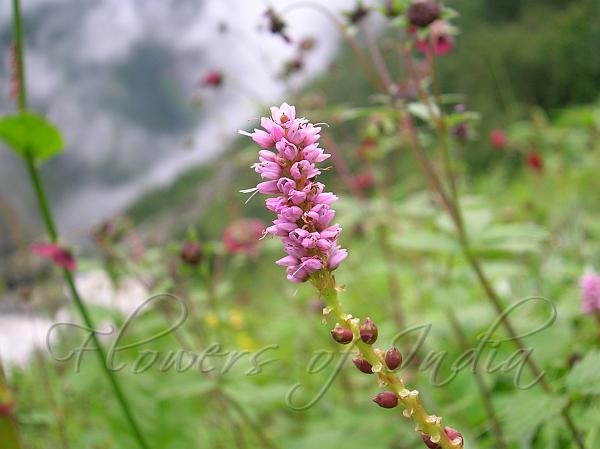|
| Alpine Bistort |
|

|

| File size | 625612 |
| Original date | 8/15/06 3:21 PM |
| Resolution | 2048 x 1536 |
| Flash | Flash did not fire, auto |
| Focal length | 8.0mm |
| Exposure time | 1/176s |
| Aperture | 3.2 |
| Focus Distance | |
| Metering Mode | Partial |
| Camera make | NIKON |
| Camera model | E3700 |
| Sensor type |
|
|
|
|
Photo: |
Botanical name: Bistorta vivipara Family: Polygonaceae (Knotweed family)
Synonyms: Polygonum viviparum, Persicaria vivipara
Synonyms: Polygonum viviparum, Persicaria vivipara
Alpine Knotweed is a perennial herb characterized by solitary slender
spikes of small pink or white flowers. Lower flowers on the spike are
usually replaced by brown or purple bulbils, small bulb-like structures.
Flowers rarely produce viable seeds and reproduction is normally by the
bulbils. Very often a small leaf develops when the bulbil is still
attached to the mother plant. The species name vivipara means
giving birth to live offspring. Spikes are 2.5-10 cm long, and flowers are
about 3 mm, but variable, more or less erect (petals not spreading).
Stamens protrude out, with dark anthers. Bracts are ovate long-pointed.
Leaves are leathery, variable, linear to oblong, up to 10 cm long, pointed
or blunt, with margins often inrolled. Lower leaves are stalked, while the
upper ones are stalkless. Stipules are papery, up to 4 cm long. Stem is
erect, 4-40 cm, arising from a thick rootstock covered with old fibrous
leaf-bases. Sometimes it can be a very slender plant up to only 10 cm
tall, with linear leaves. Alpine Knotweed is found in the Himalayas, from
Pakistan to SW China, at altitudes of 3300-5000 m. Flowering: June-July.
| Identification credit: Tabish | Photographed in Valley of Flowers, Uttarakhand & Tawang district, Arunachal Pradesh. |
• Is this flower misidentified? If yes,